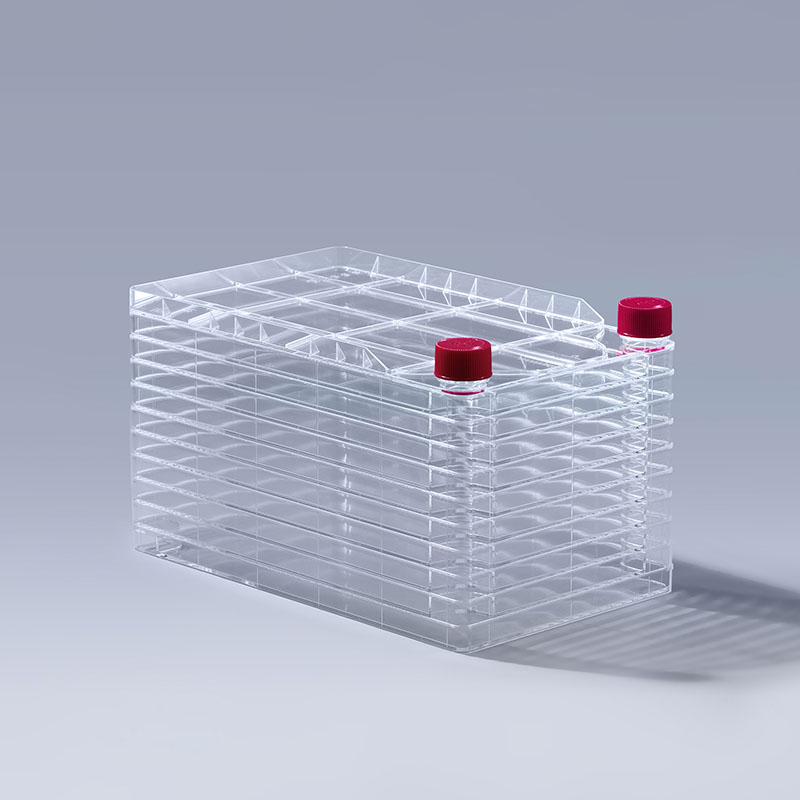Cell culture is a widely used technique in biology, medicine, and bioengineering. Cell factories are important cultivation devices with broad application value in cell culture, reflected in the following aspects:
Scaling Up Production: Due to the multi-layer structure of cell factories, they can facilitate large-scale cell culture within a limited space. This is crucial for experiments or production processes that require a large number of cells. For example, in vaccine production and monoclonal antibody preparation, the scale of cultivation directly impacts production efficiency.
Space and Resource Efficiency: The multi-layer design cleverly utilizes space, allowing more cells to be cultured in the same area. This not only saves floor space but also conserves resources like water and electricity required for cell culture.
Sterile Operation Assurance: The integrated tubing system allows for sterile transfer of liquids, greatly reducing the risk of cell contamination due to improper handling. This is vital for maintaining a pure cell culture environment.

Suitability for Various Cell Types: Cell factories are suitable for most adherent cell types, including tumor cells, stem cells, nerve cells, and skin cells.
Experimental Reproducibility and Consistency: The standardized design and simple operation of cell factories ensure that different researchers can achieve consistent results. This improves the reproducibility and consistency of experiments, which is crucial for quality control in research and production.
Industrial Production Suitability: The design and structure of cell factories make them well-suited for industrial production. The multi-layer structure and high-density cultivation characteristics significantly enhance production efficiency per unit area, and the integrated tubing system ensures sterile operations during large-scale production.
Cost Reduction: By saving space and resources, reducing contamination risk, and increasing production efficiency, cell factories can help lower production costs in the long run, improving the overall input-output ratio.
In summary, as a device specifically designed for cell culture, the multi-layer structure and special materials of Cell factories offer significant advantages. With the advancement of biopharmaceuticals and the increasing demand for efficiency, safety, and environmental protection, these cultivation devices will be increasingly applied and promoted in more research and production processes.
The FAI climbed 5.9 percent year-on-year in the first 11 months of 2018, quickening from the 5.7-percent growth in Jan-Oct, the National Bureau of Statistics (NBS) said Friday in an online statement.
The key indicator of investment, dubbed a major growth driver, hit the bottom in August and has since started to rebound steadily.
In the face of emerging economic challenges home and abroad, China has stepped up efforts to stabilize investment, in particular rolling out measures to motivate private investors and channel funds into infrastructure.
Friday's data showed private investment, accounting for more than 60 percent of the total FAI, expanded by a brisk 8.7 percent.
NBS spokesperson Mao Shengyong said funds into weak economic links registered rapid increases as investment in environmental protection and agriculture jumped 42 percent and 12.5 percent respectively, much faster than the average.
In breakdown, investment in high-tech and equipment manufacturing remained vigorous with 16.1-percent and 11.6-percent increases respectively in the first 11 months. Infrastructure investment gained 3.7 percent, staying flat. Investment in property development rose 9.7 percent, also unchanged.
 English
English


















































